Table of Contents
In this article, you will find a range of sustainable building materials exceptional in renewability and eco-friendliness.
| Read More: Green Building Design: 12 Top Rated Green Building Designs in the World |
1. What is the meaning of sustainable building materials?
✔ Sustainable building materials are either locally sourced or produced and consist of recycled materials, industrial waste, and byproducts.
✔ Opting for sustainable materials is an excellent measure to minimize the adverse environmental effects while boosting thermal efficiency.
✔ Sustainable building materials can lead to significant energy savings compared to conventional raw materials. The former requires much less energy during manufacturing, which increases energy efficiency.
2. What are the sustainable building materials?
They are:
1. Bamboo

✔ Bamboo is a fantastic renewable resource ideal for sustainable building projects.
✔ It has numerous impressive features that make it a perfect material. These features include quick growth, high resistance, and durability.
✔ This versatile material proves indispensable for a wide range of civil construction applications.
✔ It’s fascinating to note that Bamboo is an exceptionally sustainable resource.
✔ It surpasses building materials like Steel, concrete, and wood because of its negative carbon footprint.
✔ Bamboo can absorb four times more CO2 than particular tree species.
2. Precast Concrete Slabs

✔ Precast concrete is a clear winner due to its durability and low maintenance requirements. Additionally, it meets the essential criteria of being environmentally friendly.
✔ This is because precast concrete is made with recycling in mind and generates minimal waste compared to other options.
✔ Precast concrete products are crafted with utmost precision using advanced batching technology in factories, leading to negligible waste in the plant and on-site.
✔ Furthermore, precast concrete products are entirely safe as they don’t pose any threat of hazardous byproducts seeping into the ground or water supply.
3. Cork
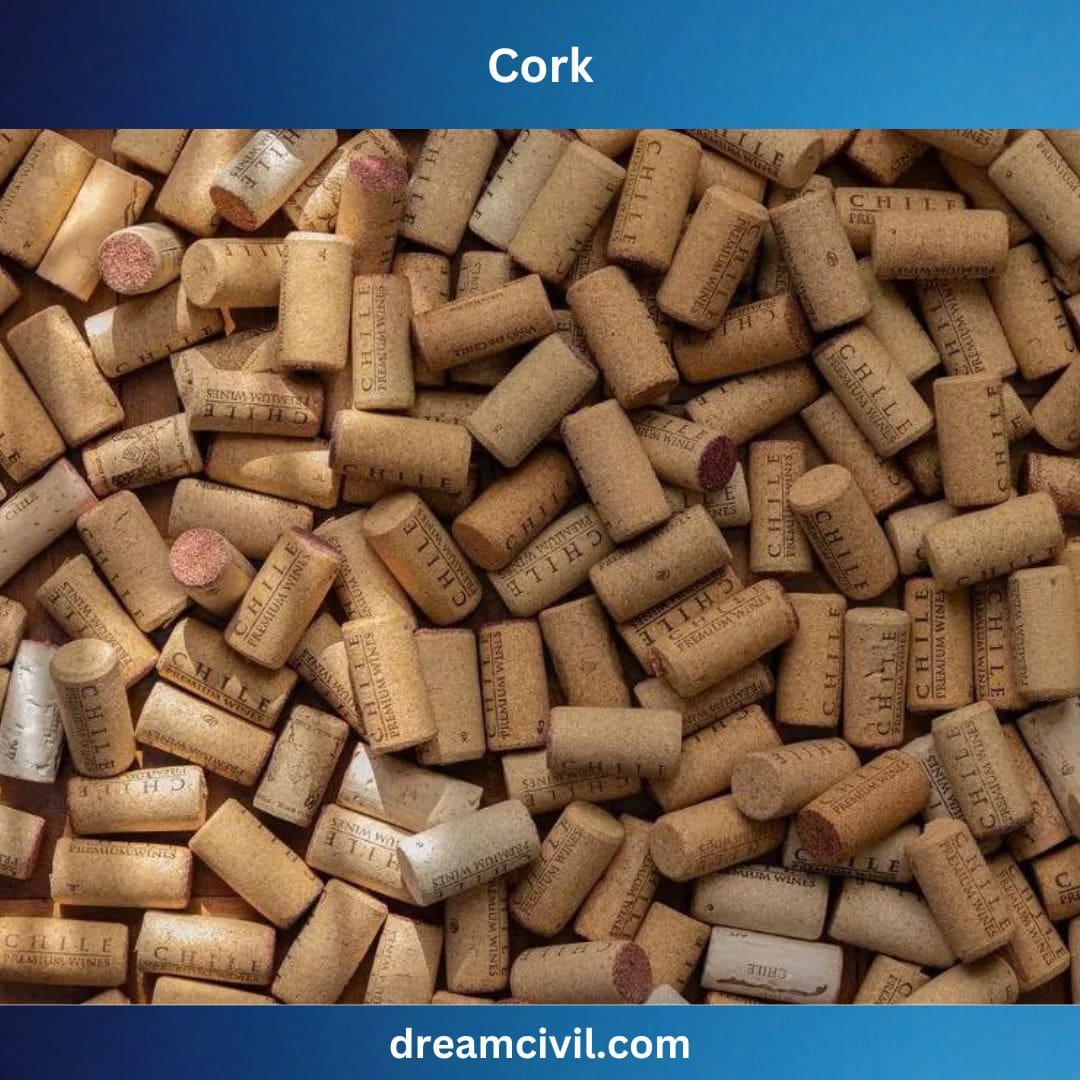
✔ Cork is undoubtedly a sustainable and eco-friendly solution that provides an excellent alternative to traditional options.
✔ Its bark can absorb CO2 during regeneration, making it an exceptional choice for those seeking environmentally conscious alternatives.
✔ The selection of this material is crucial in enhancing the energy efficiency and Sustainability of the building.
4. Straw Bales
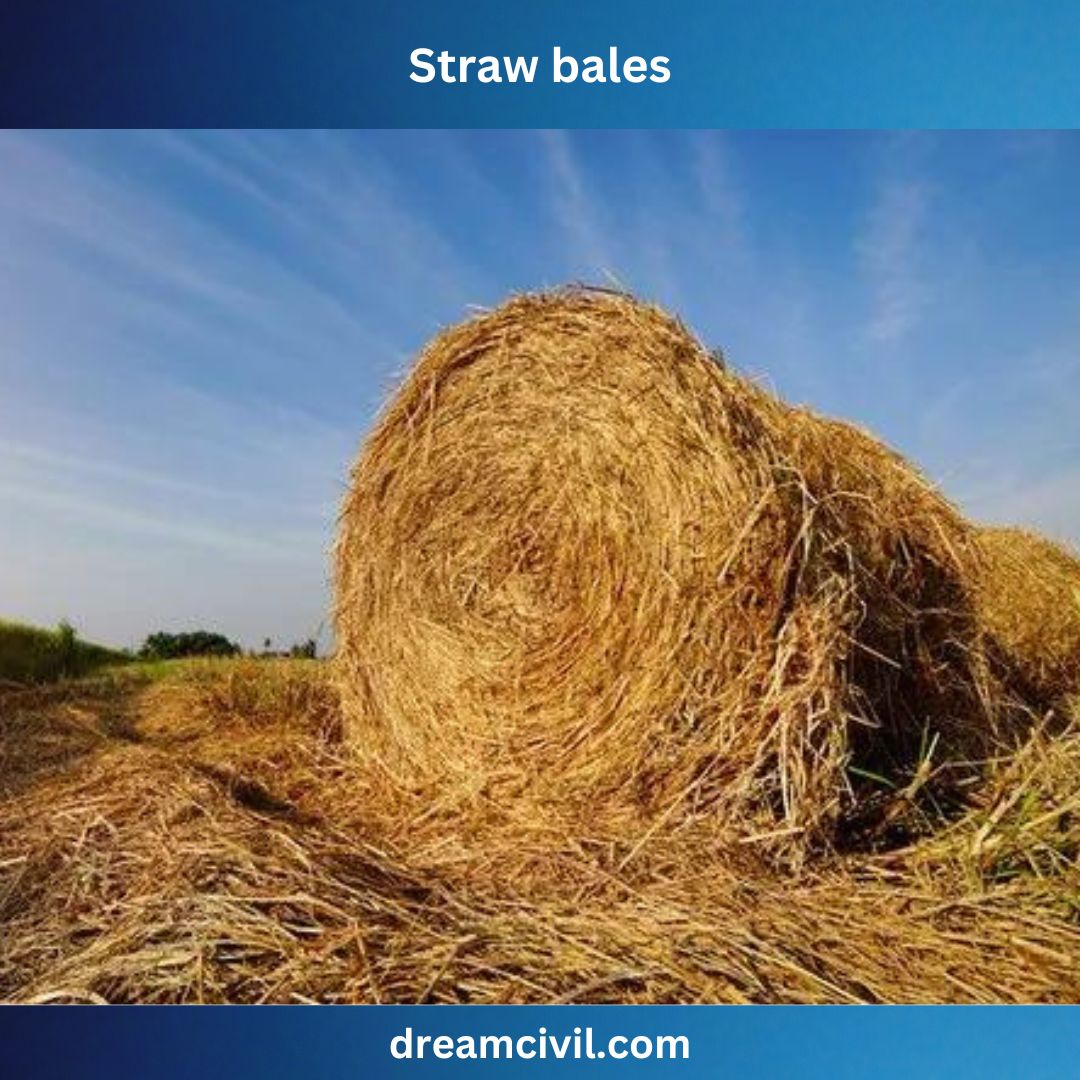
✔ Straw bale construction is a highly sought-after sustainable building method, thanks to its cost-effectiveness.
✔ Compared to conventional building materials such as bricks and concrete, straw bales are much more affordable, making them a compelling choice for eco-conscious builders on a budget.
✔ The raw materials used in construction are entirely natural and procured locally. Furthermore, the construction process is speedy once you obtain your straw bales, and the materials can be recycled once they have served their purpose.
✔ These are only a handful of the advantages for the environment.
✔ Straw bale walls are an excellent way to reflect sunlight into a room through openings and also offer space for window seats.
✔ They are easy and cost-effective to install and have low embodied energy. With proper maintenance, straw bale construction is incredibly durable.
5. Recycled Plastic

✔ Recycling plastics not only saves energy but also reduces landfill space. Recycled plastics are extensively utilized in new building and construction projects, promoting Sustainability.
✔ Moreover, these plastics can be combined with virgin plastic to cut costs while retaining their high level of performance.
✔ It may interest you that durable concrete structures, like sidewalks and driveways, can be created using recycled plastics. A team of MIT students recently experimented with recycled plastic.
✔ By subjecting small amounts of plastic to gamma radiation, they transformed it into a powder and incorporated it into cement paste to increase its strength.
✔ Recycling plastics is an effective way to reduce emissions in two critical ways. It promotes the efficient recycling and reuse of existing materials, such as incorporating plastic waste as an ingredient to produce “green” concrete.
✔ Recycled plastics can be used as a substitute for high-emissions materials like Brick or Steel. This approach can significantly reduce emissions and promote a more sustainable future.
6. Hempcrete

✔ Hempcrete is a type of building material that is environmentally friendly and sustainable.
✔ It has a low environmental impact, reduces waste production, and minimizes using natural resources and energy consumption.
✔ Hempcrete is a carbon-negative material. The hemp plant absorbs carbon during its growth, compensating for the carbon emissions released during the processing phase.
✔ Hempcrete is an excellent choice for promoting safety in building construction due to its fire-resistant properties. Moreover, it is a healthy option for indoor spaces as it requires no additional chemicals.
✔ This product boasts a low or zero-carbon footprint, is made with nontoxic materials, has high indoor air quality, and has excellent moisture-handling properties.
✔ Hempcrete is a building material with excellent durability, fire resistance, good thermal performance, and stable indoor temperatures. It is created by combining lime and hemp in proportions tailored to the specific project.
✔ The versatility of this material allows for its use in various applications, such as constructing insulating walls, linings, roofs, screeds, attic spaces, and renders.
7. Straw

✔ Organic Straw is an eco-friendly resource material that offers numerous advantages in terms of Sustainability. Its use contributes to carbon sequestration and helps protect the environment.
✔ When wood and other biomass are burned, they are carbon neutral as long as they are regrown. Straw is an excellent insulator due to the dense structure of the bale, which absorbs and radiates heat into the surrounding room.
✔ Straw-bale construction uses bales of Straw (usually made from wheat, rice, rye, or oats straw) for structural elements and Insulation. This approach minimizes heat loss and creates a comfortable indoor environment.
✔ The produced structure is both lightweight and durable, and it can work as a structural element by itself or as an efficient insulating barrier.
✔ Straw is a highly sustainable material resource that boasts many benefits. Since it’s organic, it’s incredibly environmentally friendly and can sequester carbon. Like wood and other biomass, it’s carbon neutral when burned, given that it’s replaced.
8. Cob
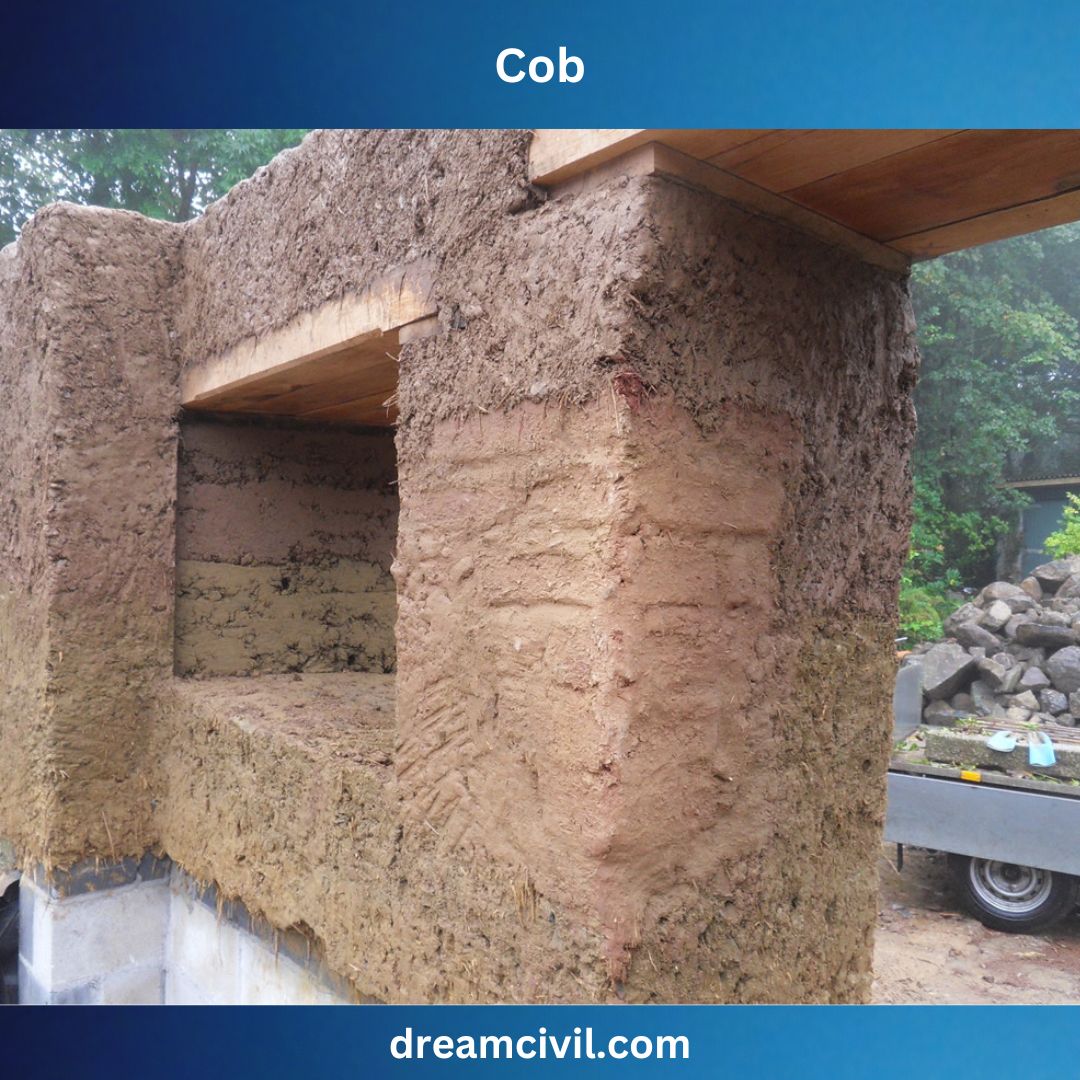
✔ Cob is a sustainable material with a deficient carbon and ecological footprint. All the materials used to make Cob are sourced from the ground and are locally available.
✔ Cob is a natural building material made of clay, sand, and Straw mixed in different ratios to create a durable and sturdy structure. This age-old technique is still widely used and remains popular even today.
✔ Cob is a sturdy, flame-retardant substance that can endure natural calamities like earthquakes and hurricanes.
✔ Moreover, cob houses can seamlessly integrate with the surrounding natural environment and incorporate sustainable energy sources such as solar power into their architectural design.
✔ The best locations for constructing buildings with Cob would be in regions with temperate weather that experience hot and cold seasons, cold climates, and hot and dry climates.
✔ These areas can fully maximize the thick Cob, for storing the Cob for storing heat in winter and keeping cool in summer.
9. Adobe
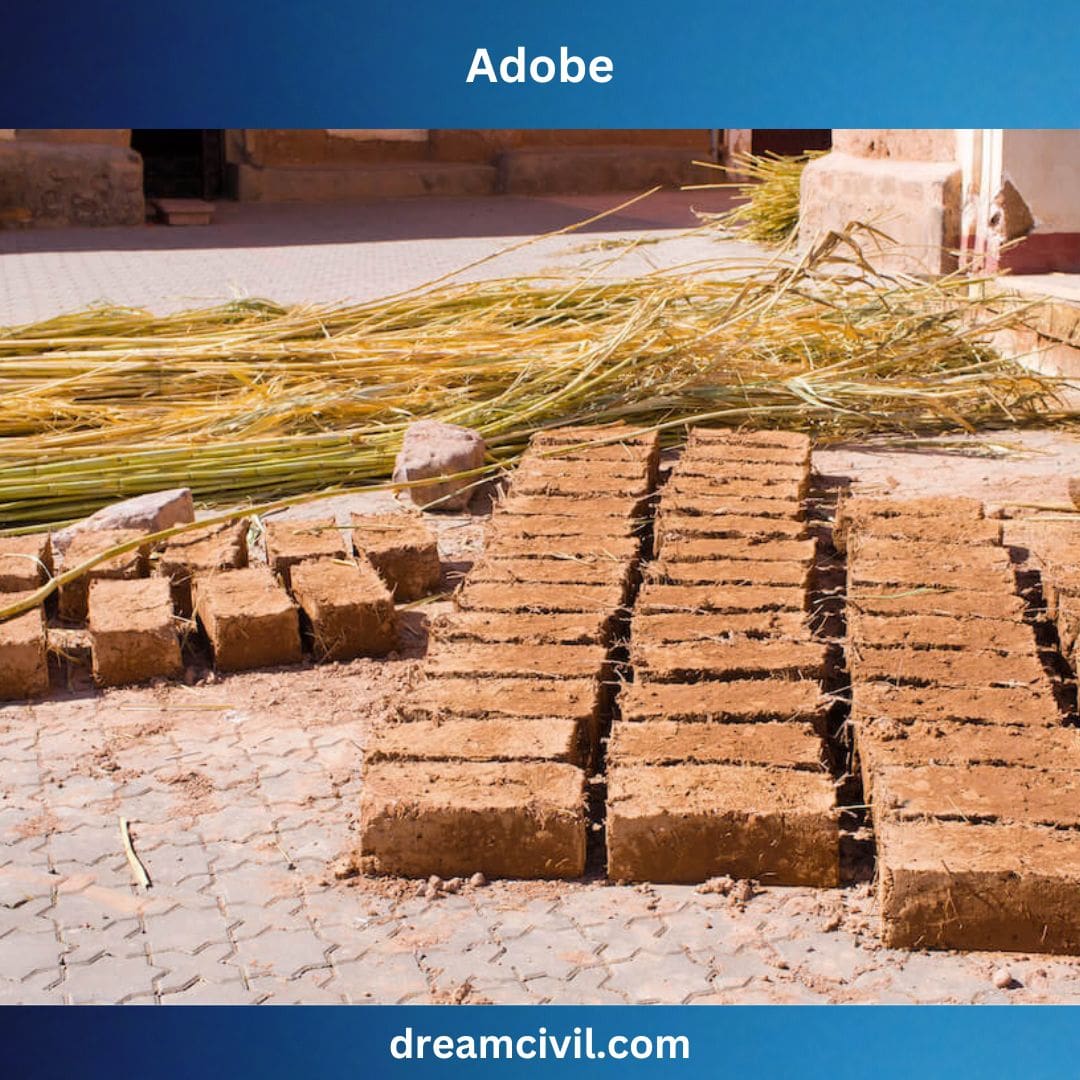
✔ Throughout the ages, adobe bricks have persistently demonstrated their durability and are universally acknowledged as a construction material that promotes ecological well-being.
✔ These bricks are created by blending clay, sand, and water, often with Straw or dung, and left to dry under the sun.
✔ Adobe bricks are excellent durable, and eco-friendly construction material that enables and soundable nature; Adobe is a construction material that blends seamlesslAdobeh its surroundings, creating beautiful and visual buildings.
✔ Adobe is a construction material commonly composed of natural, locally-sourced ingredients like clay, sand, and silt. These materials are abundant and easily accessible in manAdobeions, making Adobe environmentally friendly and cost-effective.
✔ Adobe Adobetures are incredibly resilient and are among the oldest buildings still standing in the world.
✔ Adobe buildings have a higher thermal mass, which is advantageous. However, they are vulnerable to earthquake damage without reinforcement.
10. Cross-laminated timber

✔ Cross-laminated timber is a sustainable and renewable building material made from wood. It requires less production than Steel and has a significantly lower carbon footprint.
✔, Unlike Steel, produced using coal and extreme heat, cross-laminated timber is a more environmentally friendly option.
✔ CLT stands for Cross Laminated Timber, an engineered wood product comprised of layers of kiln-dried dimension lumber.
✔ These layers, usually three, five, seven, or nine pieces of wood, are oriented at right angles and then glued together to create structural solid structural panels.
✔ The panel provides structural solid support in both directions by bonding layers of wood at right angles. Additionally, the use of Cross-Laminated Timber (CLT) is environmentally friendly as it can store and even capture carbon during the lifespan of the building.
✔ According to research, a mid-rise commercial building made with a hybrid of cross-laminated timber (CLT) materials has the potential to reduce global warming by 15-26%, depending on the building’s design.
✔ Compared to Steel and concrete construction, it is a material with a low impact and significantly lower embodied carbon footprint.
✔ Cross-Laminated Timber (CLT) offers remarkable benefits by sequestering carbon throughout its lifespan. Notably, CLT is superior to concrete and Steel in regenerative material.
11. Recycled Steel
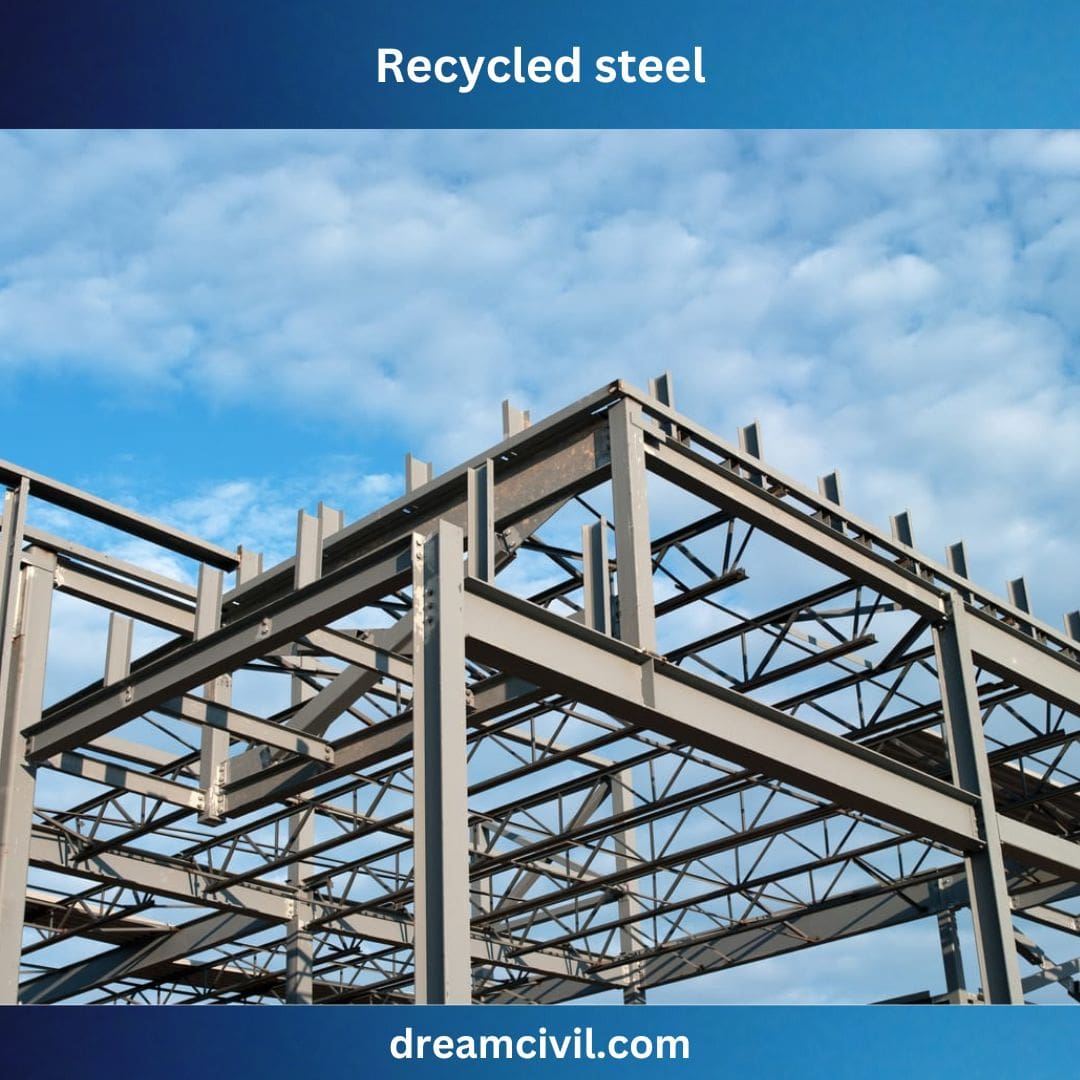
✔ It is undeniable that Steel is a highly advantageous building material, not only due to its environmental Sustainability but also because of the important not only benefits it offers.
✔ Sustainability is not only its numerous benefitssons but also because of the numerous benefits it offers.
✔ One significant advantage is that structural pieces such as beams and columns can be reused multiple times without melting down again.
✔ Steel is a highly durable material that can be used multiple times without needing remelting or additional processing. This ensures that the quality of The Steel is mainwithhile also saving money.
✔ Maintaining Steel is a sustainable choice, with 93% recycled and 100% recyclable pro, making it an ideal option for circular use for many generations.
12. Sheep’s Wool

✔ Wool is a renewable resource that can be used as Insulation to reduce your carbon footprint.
✔ Thermal Insulation from sheep’s Wool is highly effective for minimizing heat loss through building envelopes.
✔ The use of insulating envelopes can significantly reduce coal consumption by as much as 60%. This type of Insulation is highly effective in providing thermal Insulation.
✔ “Ocas” is highly effective in providing mechanical Insulation, while “it” is also highly effective in providing other forms of Insulation.
✔ This highly effective product provides versatile solutions for land and marine environments.
✔ When it comes to clothing, Wool is an excellent choice as it has a minimal impact on the environment during production, making it one of the most eco-friendly fabrics available.
✔ Another sustainable option is polyurethane, which is affordable and safe and helps preserve natural resources by reducing energy needs.
✔ Additionally, spray polyurethane is a popular choice for Insulation and can help improve the energy efficiency of buildings.
13. Polyurethane

✔ Polyurethanes are an affordable and sustainable solution that effectively reduces energy consumption and preserves our planet’s natural resources.
✔ Spray polyurethane foams (SPFs) are a top choice for insulation material, offering improved energy efficiency and comfort for buildings while decreasing greenhouse gas emissions and enhancing indoor air quality.
✔ Unlike plastic, which can negatively impact the endocrine and hormone systems and affect soil and water pH levels, polyurethane is an eco-friendly material that is safe and versatile.
✔ Its lightweight nature, durability, and versatility make it a highly sought-after material in the construction, furniture, bedding, automotive, and binder industries.
✔ Using polyurethane can help reduce waste and energy consumption, making it a smart choice for businesses and individuals committed to sustainable practices. Environment.
✔ Insulation is a helpful way to reduce the use of natural gas, propane, fuel oil, and electricity for heating and cooling buildings.
✔ This benefits the environment by reducing emissions of harmful pollutants like carbon dioxide, sulfur oxide, and nitrogen oxide, among others. Insulation should be made with recycled materials and minimal chemical treatment to be more environmentally friendly.
✔ Materials with a high R-value are more effective in regulating heat flow in your home and reducing energy consumption.
14. Mudbrick

✔ Mudbrick is incredibly eco-friendly, with low embodied energy and minimal environmental impact. To make a mud brick, you only need earth, water, and some fillers like Straw.
✔ To create a green building material, you only need to mix the ingredients, mold it, and let it dry.
✔ There are several other sustainable options for building materials, such as renewable plant materials like Straw and mud brick, responsibly sourced timber, recycled materials, and eco-friendly and reusable products that are not harmful to the environment.
✔ Brick and concrete are two eco-friendly construction materials. Brick is made from clay and shale, while concrete is primarily made from limestone. Both materials have a low environmental impact throughout their life cycle.
15. Enviroboard

✔ If you’re searching for a construction material that’s both eco-friendly and sustainable, Enviroboard is the answer! It’s a green building material made of recycled paper and cement that is an excellent substitute for traditional materials like wood.
✔ This versatile material can be used for various purposes, including flooring, wall cladding, roofing tiles, and furniture.
✔ Choosing Enviroboard is an environmentally conscious decision since it is free of PVC and plastics.
✔ This product is created using FSC® certified paper and is completely recyclable. Moreover, it has a meager weight, making printing and installing displays hassle-free.
✔ Enviroboard is a reliable option for your construction needs because its embossed paper core provides rigidity and ensures it stays flat.
16. Cellulose insulation

✔ It’s fascinating to learn that cellulose insulation is created using recycled materials. This type of Insulation can have a significant impact on reducing the carbon footprint of your home.
✔ Using cellulose insulation can even reduce your energy bills and contribute to lowering greenhouse gas emissions.
✔ Moreover, cellulose insulation is flame retardant, ensuring your home is safe. Not only is cellulose insulation affordable and efficient, but it also promotes a more eco-friendly home by reducing waste paper in landfills.
✔ Cellulose is a sustainable textile material gaining popularity in the fashion industry due to its environmentally friendly properties. Made from plants, cellulose fibers offer a natural alternative to synthetic fabrics and can be produced with minimal environmental impact.
17. Fiber cement
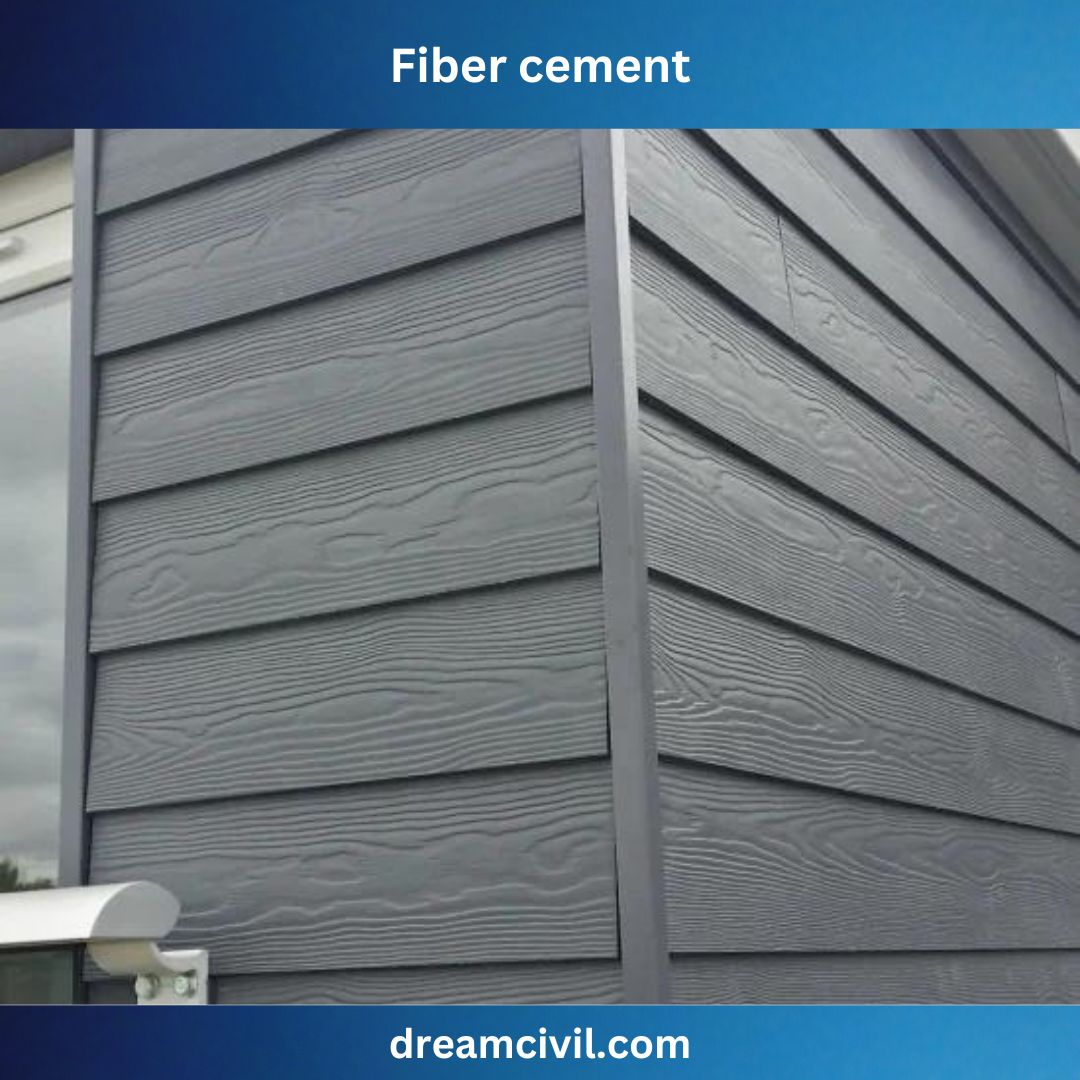
✔ Fiber-reinforced concrete (FRC) has immense potential as a sustainable building material for the future.
✔ It boasts improved properties and versatility and requires less energy to produce than traditional concrete.
✔ This means it can lead to a longer service life, reducing the need for replacements and the associated emissions.
✔ Fiber cement is a highly sustainable material in many ways. It helps consumers save money while reducing their impact on the environment and protecting their health.
✔ One significant environmental advantage of fiber-cement siding is its production process. The material is made from recycled materials and other sustainable products, such as cement, sand, and Cellulose. Environmental impact and polyurethane spray foam insulation is a more eco-friendly option than other insulation products.
✔ This product has a minimal impact on the environment, is highly energy-efficient, durable, and effectively maintains indoor air quality.
✔ SPF insulation can fill gaps and prevent air infiltration, thereby improving the efficiency of HVAC systems. This is an essential factor to consider.
✔ This is a vital factor for noticeable energy bill savings and assistance.
✔ Foam can reduce greenhouse gas emissions and is a sustainable and versatile packaging material that can be reused.
✔ There are various options, including die-cut bespoke Foam for flight cases, gift boxes, camera case inserts, acoustic Foam, and water.

